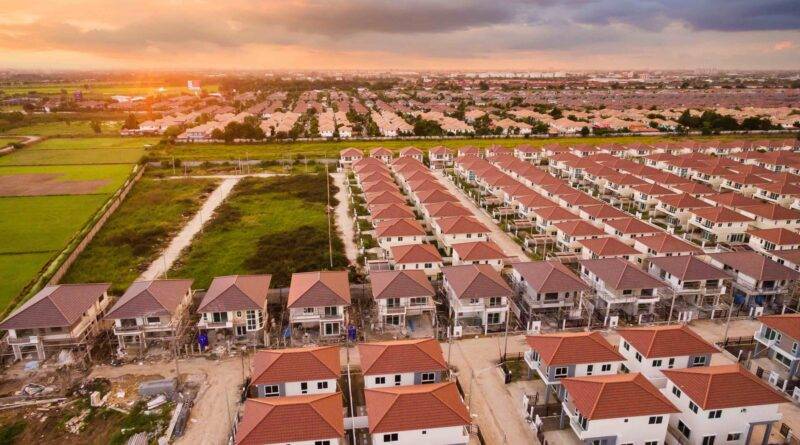A Rapid Shift From Building To Adjustment
Fortunately, we missed the overbuilding stage of the cycle
By Greg Vogel
 The Nation’s land and lot market has temporarily frozen. The continued rate hike shock has removed all forms of visibility, making it challenging to determine near-term outcomes. The 300-400 basis point rise on the 30-year mortgage combined with home price escalation in 2021 and early 2022 made for a perfect storm.
The Nation’s land and lot market has temporarily frozen. The continued rate hike shock has removed all forms of visibility, making it challenging to determine near-term outcomes. The 300-400 basis point rise on the 30-year mortgage combined with home price escalation in 2021 and early 2022 made for a perfect storm.
The vast majority of builders have halted land and lot purchases and slowed horizontal development spending. The builder’s sole focus is closing the backlog of homes under construction. This has proven challenging as there has been a rise in consumers’ fear of catching a falling knife. The fear of buying homes will subside as builders offer discounts and incentives to get us to “rapid price discovery.” The proverbial whip has clearly changed hands from homebuilder to homebuyer, which will be the case until the backlog of inventory is depleted over the next few quarters.
We should reflect on the supply and demand dynamics compared to the onset of the Great Financial Crisis (GFC) in 2007. In 2007, the Phoenix MSA had 122,000 finished lots on the ground. Lot demand plummeted while we lost tens of thousands of jobs which was further aggravated by a population exodus that left houses and apartments with high vacancies. Today, the Phoenix MSA has roughly 16,000 finished lots in active subdivisions with a recent 12-month run rate of 25,000 permits. Housing occupancy is high, 70,000 jobs have been created and the population has grown by 80,000 in the past 12 months.
This theme of undersupplied finished lots and housing in Phoenix has varying similarities to most of the recent vibrant housing markets across the U.S. These are not ingredients for a prolonged down cycle nor a further plunge in values.
It is critical to acknowledge that the current cycle went from Building straight to Adjustment – skipping the Overbuilding phase. The Adjustment phase came rapidly, and we will leave this phase in short order.
Lower horizontal and vertical costs are accretive to land value as long as a reasonable profit margin exists to warrant building in the first place.”
The land and lot market recovery will vary based on many supply and demand factors. The shortage of finished lots will worsen as acquisition and development pauses and this shortage will be recognized as soon as the backlog of the current new home inventory clears.
As costs increase without compensating for factors like house price appreciation, land value is negatively affected. We fully expect a continued adjustment downward on house prices to total 15-30% in most regions of the country. We also expect heavy pressure from builders that will force horizontal and vertical costs downward as the whip changes hands from the contractor/supplier to the homebuilder. The war on costs is just beginning – lower horizontal and vertical costs are accretive to land value as long as a reasonable profit margin exists to warrant building in the first place.
Downturns tend to breed creative solutions. There has been a recent trend for builders to remove land and lots from their balance sheet while retaining rights to repurchase. The tax implications are not great, though it is outweighed by increasing the return on investment (ROI), internal rate of return (IRR) and mitigating risk to the amount of land and lot exposure. Regarding new land and lot acquisitions, now is the time to get creative on structuring softer purchase terms, including “subject to” entitlement and phased take down structures.
Homebuilders will continue to generate growing cash balances, partly due to temporarily removing the typical 20-30% of gross revenue spent on reloading land and lots. The builders went into this adjustment with pockets full of cash and low debt. They will not be forced to liquidate land, nor will institutions and lenders experience a fallout. As down cycles go, this will be relatively mild.
As we move through this Adjustment phase, the strategy of harvesting backlog without paying forward new land and lot inventory will cease, and a new cycle of reloading land and lots will begin.
Once visibility is clear, it enables the ability to project price and pace; we will begin a new Acquisition and Building phase. Until then, let’s be thankful for the building phase we had and look forward to rapidly exiting the pains of this current Adjustment.
Greg Vogel is CEO of Land Advisors Organization. He can be reached at GVogel@landadvisors.com.



